Lesson 9. Biology Grade 10-11.
Study the lecture.
Lecture 7. Cytoplasm. Non-membrane organelles
NON-MEMBRANE ORGANELLES.
RIBOSOMES.
By their biochemical structure, they are ribonucleoproteins or RNPs. Ribosomes consist of a large subunit and a small subunit. These subunits interact quite complexly with each other. Ribosome formation in eukaryotes occurs in the nucleus, in the nucleolar network, and then the large and small subunits migrate through pore complexes into the cytoplasm. Prokaryotic and eukaryotic ribosomes differ primarily in size. Eukaryotic ribosomes are 25-30 nm, while prokaryotic are 20-25 nm. They also differ in sedimentation coefficients. In eukaryotes, the small subunit contains 18S rRNA, and the large subunit contains 5S, 5.8S, and 28S rRNA. In prokaryotes, the small subunit contains 16S rRNA, and the large subunit contains 5S and 23S rRNA. Eukaryotic small subunits contain about 34 proteins, and the large subunits about 43 proteins. Prokaryotic small subunits have about 21 proteins, and the large subunits about 34 proteins.
CELL CENTER
This is a universal non-membrane organelle of the eukaryotic cell, consisting of two components:
centrosome
centrosphere.
The centrosome is a dense non-membrane body, mainly protein in nature. It localizes γ-tubulin, which participates in microtubule organization.
The centrosphere is formed by fibrillar proteins. Mainly microtubules make up the centrosphere. Additionally, it contains many skeletal fibrils and microfibrils that fix the cell center near the nuclear membrane. In most eukaryotes, the centrosome has a centriolar structure, i.e., it consists of two centrioles oriented at a 90° angle to each other. Some protozoa (e.g., sporozoans), nematodes, higher plants, and lower fungi lack the centriolar structure. Cells without centrioles cannot form flagella.
The centriole is a cylindrical body hollow inside, with a wall made of microtubule triplets; 9 triplets are arranged peripherally and connected by dynein arms. Each triplet consists of one complete (13 protofilaments) and two incomplete (11 protofilaments) microtubules. A protein axis is located in the center of this cylinder, from which protein spokes extend to the triplets and dynein arms. The centriole is surrounded by an amorphous substance called the centriolar matrix. γ-tubulin-containing centrosomal microtubule organizing centers (CMTOCs) are localized here.
-
participate in microtubule formation, which extend into the cytoplasm or become part of the spindle apparatus
-
participate in organizing the mitotic spindle
-
centrioles participate in forming flagella and cilia
Complete the tasks:
-
Describe the functions of non-membrane organelles.
-
What is the structure of the centrosphere?
Lesson 12. Biology Grade 10-11.
Study the lecture.
Lecture 8. Nuclear Apparatus
The nuclear apparatus includes several complexes:
-
surface apparatus of the nucleus or karyotheca
-
karyoplasm, nucleoplasm, nuclear sap or karyolymph
-
nuclear matrix
-
chromosome.
Karyotheca consists of several elements: -
nuclear envelope or kariolemma
-
protein pore complexes
-
peripheral dense plate (PDP) underlying the kariolemma.
The kariolemma consists of two membranes: outer and inner. These membranes transition into each other at pore regions; between them lies the perinuclear space. The outer membrane directly continues into the rough endoplasmic reticulum (RER) membrane, which is why the nuclear apparatus is now considered a specialized part of the ER, arising to isolate genetic material from the cytoplasm. Ribosomes may be located on the outer membrane, and many carriers, enzymes, and receptors are also localized here.
The kariolemma contains many pores, whose number depends on the nucleus's functional activity. Pores contain pore complexes, whose main function is the specific transport of macromolecules into and out of the nucleus. Each pore complex is a system of large protein granules, including peripheral globules and one central globule. Peripheral globules form outer and inner rings, each consisting of 8 globules. These rings are connected to the central globule by fibrillar proteins, which maintain the integrity of the entire complex. Peripheral globular rings are fixed by hydrophobic interactions with the outer and inner membranes and interaction with the PDP.
mRNA is transported from the nucleus to the cytoplasm through the central globule; polypeptides are transported from the cytoplasm to the nucleus. The central globule has receptors recognizing protein molecules; protein transport requires ATP energy. Proteins entering the nucleus are called nucleophilic because they possess a peptide signal sequence. tRNA and ribosomal subunits are transported from the nucleus to the cytoplasm through peripheral globules.
PDP is a complex protein structure consisting of skeletal proteins or lamins interacting with each other. The PDP contains three lamins that form a complex lattice structure through mutual interaction. Lamins underlie only the inner membrane and are interrupted near pore complexes. -
Lamins form the karyoskeleton
-
They can interact with cytoplasmic skeletal proteins near pore complexes, thus participating in organizing the entire cytoskeleton
-
They participate in organizing the inner peripheral ring of the pore complex
-
They participate in chromatin organization, as telomeric chromosome regions attach to lamins.
Karyoplasm resembles hyaloplasm in structure but contains a high concentration of nucleotides and various enzymes for matrix processes. Nuclear matrix proteins are also localized in the karyoplasm.
The nuclear matrix is an interacting network of fibrillar proteins connected at their ends to lamins. The main function of the nuclear matrix proteins is chromatin organization. These proteins participate in creating the chromomeric level. The nucleomeric thread attaches to nuclear matrix proteins at replication origins (replicators), so the nuclear matrix participates in organizing matrix processes.
The nuclear matrix contains special areas where matrix threads form condensations called the nucleolar network. Here, special chromosome regions bearing rRNA genes, called nucleolar organizers, attach to nuclear matrix proteins. rRNA synthesis, RNA association with nucleophilic proteins, and ribosomal subunit formation occur in the nucleolus.Chromosomes chemically consist of chromatin (see chromatin organization levels).
Task:
Formulate questions based on the studied lecture.
Lesson 13. Biology Grade 10-11.
Study the lecture.
Lecture 9. Cell Life Cycle. Mitosis
The life cycle is the period from the cell’s appearance to its death or division. Generally, the life cycle divides into two phases:
-
phase of intense metabolic activity
-
cell division and genetic material distribution to daughter cells.
The simplest life cycle is in prokaryotes, which includes:
S-phase or growth phase and simple binary fission (see prokaryote reproduction).
In eukaryotes, genetic material distribution is complicated by the presence of many linear DNAs and a nuclear membrane, so the universal division is mitosis, which uses a special division apparatus made of protein fibers called the mitotic spindle. Thus, the eukaryotic life cycle is called the mitotic life cycle. Mitosis occupies no more than 10%, with the rest spent in a phase of intense metabolism called interphase, which includes: -
postmitotic period or G1 phase. Active transcription and translation occur, energy metabolism activates, cytoplasm volume sharply increases. Proteins needed to initiate replication are synthesized.
-
synthetic period or S phase. DNA replication occurs. DNA quantity doubles, each chromosome consisting of two DNA strands connected at the centromere. The cell center duplicates. Proteins necessary for the next phase are synthesized.
-
premitotic period or G2 phase. Active transcription and translation continue; many mRNAs are synthesized and combined with proteins, forming cytoskeletal information reserves called informosomes. Also, the factor provoking cell division with protein kinase activity (MPF factor) is synthesized. Without MPF, the cell cannot start mitosis.
Cells can exit the mitotic life cycle and enter a resting phase, typical for protozoa forming cysts under unfavorable conditions. In this state, protozoa survive adverse environments and resume the mitotic cycle when conditions normalize. Some specialized multicellular organism cells exit the mitotic cycle, differentiate, perform functions, then die, as in nerve cells and erythrocytes.MITOSIS.
Consists of two major stages: nuclear division or karyokinesis, and cytoplasmic division or cytokinesis.
Karyokinesis has several phases:
prophase
metaphase
anaphase
telophase
At prophase onset and throughout it, chromosomes progressively spiralize. Chromomeric threads align along nuclear matrix proteins; chromosomes become short and thick. Each chromosome consists of two sister chromatids connected at the centromere. Chromosome spiralization involves the MPF factor. From prophase start, cell organelles fragment, also involving MPF. Fragmentation to membrane vesicles frees space for spindle construction. Both cell centers participate in spindle formation, moving apart and actively synthesizing microtubules, aided by MPF.
Astral microtubules fix cell centers relative to the plasmalemma.
Polar microtubules provide additional mechanisms for genetic material separation to cell poles and vesicle movement to poles.
Kinetochore microtubules attach to chromosomes at the centromere. Each chromosome has a protein complex called the kinetochore, which has ATPase activity and can move along microtubules like a translocator, thus providing the main genetic material segregation mechanism.
At late prophase, the nuclear envelope fragments into membrane vesicles; the peripheral dense plate breaks down, but each vesicle contains one inner lamin. Chromosomes lie in the karyoplasm with kinetochore microtubules approaching them.
Metaphase. Due to kinetochore microtubule polymerization, chromosomes move to the cell equator and align vertically, forming the metaphase plate consisting of all chromosomes. Each chromosome ends with two kinetochore fibers; centromeres duplicate, and kinetochore complexes divide. By metaphase end, each sister chromatid has its own centromere and kinetochore complex, connected to kinetochore microtubules from opposite poles.
Anaphase. Sister chromatids separate to opposite cell poles by two mechanisms: -
main: kinetochore activity; kinetochores move along microtubules, which depolymerize as kinetochores advance. The kinetochore carries the sister chromatid.
-
additional: polymerization of polar microtubules and likely translocator activity between polar microtubules.
Another important anaphase process is vesicle separation along polar microtubules by translocators. Though random, the abundance of vesicles ensures almost all membrane organelles reach both poles.
Telophase. Reverses prophase processes: near each pole, the nuclear apparatus forms, cell centers and full organelle sets appear. Two cytoplasm copies form under one plasmalemma.
After karyokinesis, cytokinesis begins, differing in animals and plants. Animal cells use an actomyosin contractile ring to form a deep cleavage furrow dividing the cytoplasm. In plants, cytokinesis is complicated by the cell wall; a cell plate of cellulose grows from inside outward, dividing the cell in two.
Sometimes abnormal cell division or amitosis occurs, lacking spindle formation. The cell divides by constriction, with the nucleus pinching off. Amitosis does not ensure equal genetic material distribution, characteristic of cancer cells and possibly macronuclei in ciliates.
Mitosis pathologies
Primarily related to spindle or kinetochore complex defects. They can be hereditary or induced. Substances disrupting the spindle include alcohol and the plant alkaloid colchicine. If the spindle is disrupted before anaphase, cells contain chromosomes with double genetic information sets, called polytene chromosomes. Normally, these occur in some secretory cells (salivary glands). Spindle disruption during anaphase forms cells with doubled chromosome sets or polyploid cells. Polyploidy is usually lethal in animals but common in plants.
TASKS
Provide a brief description of each mitosis stage.
What pathologies are associated with mitosis?
Physical Exercise Breaks During Drawing Lessons
25 Years of Our Beloved School: A Heartfelt Reunion and Celebration
Sponsorship Support Provided to Secondary School No. 19 with Advanced Educational Programs in the 2014–2015 Academic Year
Caution: Thin Ice – Stay Safe Near Water in Winter

 Deutsch
Deutsch
 Francais
Francais
 Nederlands
Nederlands
 Svenska
Svenska
 Norsk
Norsk
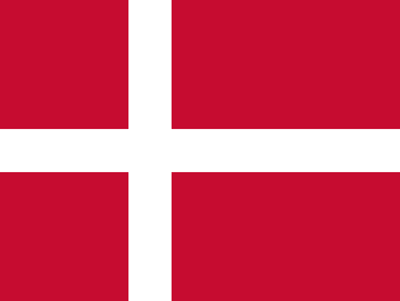 Dansk
Dansk
 Suomi
Suomi
 Espanol
Espanol
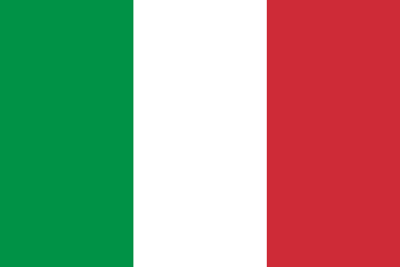 Italiano
Italiano
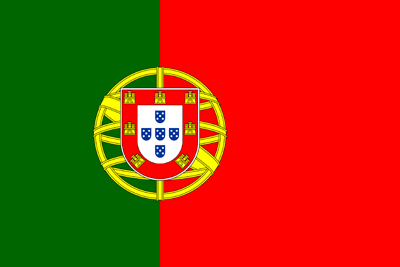 Portugues
Portugues
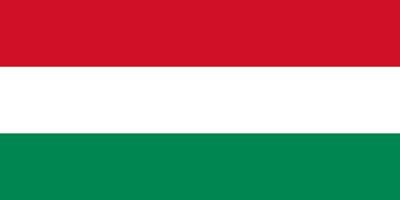 Magyar
Magyar
 Polski
Polski
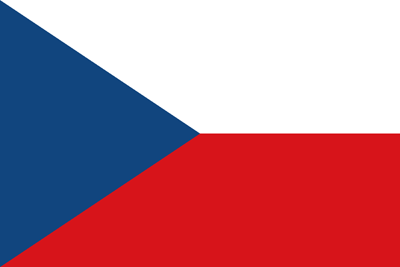 Cestina
Cestina
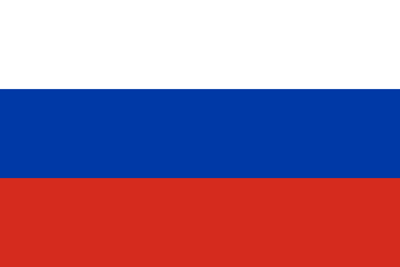 Русский
Русский